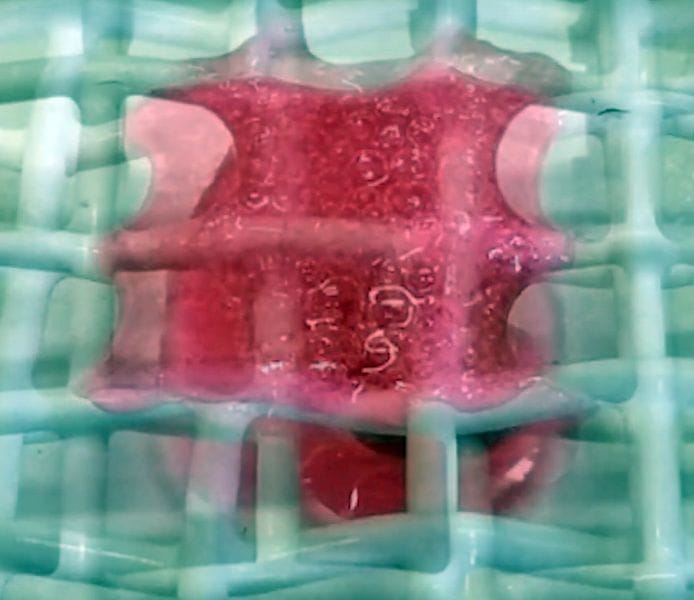![A partially melted material that could potentially be used as 3D printer support material [Source: QUT]](https://fabbaloo.com/wp-content/uploads/2020/05/image-asset_img_5eb092fc0d6a9.jpg)
Researchers have developed a way to control polymer stiffness using light, which could lead to some interesting 3D printing possibilities such as liquifying support structures.
Work done by researchers from the Queensland University of Technology, Ghent University and the Karlsruhe Institute of Technology involves the creation of a synthetic material that is reprogrammable with only exposure to certain light frequencies. In this case, it is green light that activates the effect.
The researchers prepared a composite material containing a mix of triazolinediones and naphthalenes, which just happens to be the active ingredient in common mothballs. I can imagine the aroma of this unusual material.
Temporary Material Solidification
The effect created was to temporarily solidify the material when exposed to a specific light frequency, in this case green light. As long as the green light was maintained, the material remained strong and rigid.
But when the light was removed and the material sample placed in darkness, the molecular bonds gradually release and the material softens. As you can see in this video, the material eventually becomes a liquid; it does not merely “get softer”.
This is a very unusual material, as most resins used in 3D printing equipment are photopolymers; they solidify permanently when exposed to light of certain frequencies. That’s the basis of SLA and DLP 3D printers.
But this is different, as the solidification effect is reversible, merely by changing the light exposure to the material. Researchers also said they could control the speed of the softening by dimming the green light source appropriately, or even maintaining a specific degree of softness with a lower green light level. Apparently the effect works strongest when all light is removed.
The researchers believe they have invented an entirely new class of material that they call light-stabilized dynamic materials (LSDMs).
Melting Support Structures
The obvious use in the 3D printing world would be as a kind of liquifiable support material. Here’s how it would work: 3D print an object with an LSDM as support material, with green light shining on the print. When the print completes, place the object in a dark box and simply wait for the support LSDM material to liquify and drain away.
It may even be possible to recycle the LSDM in subsequent prints if it were collected after liquifying. I suspect that using it in a 3D printer would require some kind of liquid dispenser with a green light source; the liquid would be pushed out of a nozzle and immediately enter a green light field for solidification. Recycled LSDM liquid could be poured back into the reservoir.
What I don’t quite understand from the press release is the speed of these reactions. They do say:
“The hard-to-soft process could be repeated with the flick of the switch.”
But that doesn’t necessarily mean LSDM support structures would instantly liquify. Additionally, it’s not clear how long it would take for solidification to take place. If it is at all long, then the use of LSDMs in 3D printers as support materials could be very limited, as the printing process could be incredibly slow.
LSDM Availability
Nevertheless, it seems the researchers have been contacted by several 3D printer manufacturers who seem interested in the applications of this effect.
Who knows, perhaps we may see LSDM extruders and materials appear in future 3D printers.
Via QUT











A research thesis details the incredibly complex world of volumetric 3D printing. We review the highlights.